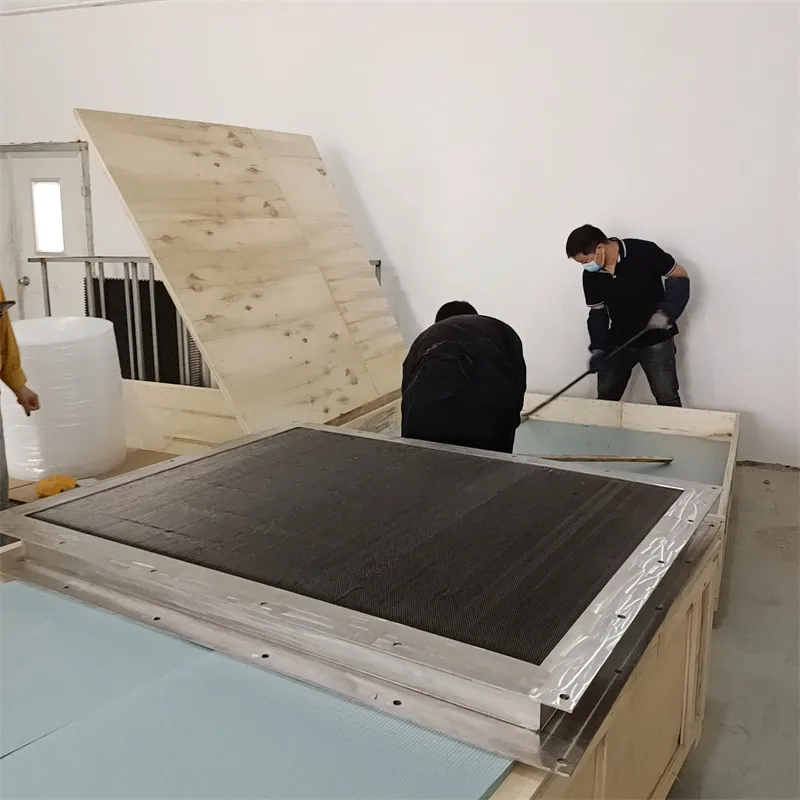
- Afrikaans
- Albanian
- Amharic
- Arabic
- Armenian
- Azerbaijani
- Basque
- Belarusian
- Bengali
- Bosnian
- Bulgarian
- Catalan
- Cebuano
- China
- China (Taiwan)
- Corsican
- Croatian
- Czech
- Danish
- Dutch
- English
- Esperanto
- Estonian
- Finnish
- French
- Frisian
- Galician
- Georgian
- German
- Greek
- Gujarati
- Haitian Creole
- hausa
- hawaiian
- Hebrew
- Hindi
- Miao
- Indonesian
- Italian
- Japanese
- Javanese
- Malay
- Persian
- Portuguese
- Punjabi
- Russian
- Spanish
- Swahili
- Telugu
- Vietnamese

Carbon Core Honeycomb Plastic Composite Panels High-Strength & Lightweight
- Introduction to Carbon Core Honeycomb Solutions
- Technical Advantages of Hybrid Plastic-Carbon Structures
- Performance Comparison: Carbon Core vs Traditional Materials
- Customization Strategies for Industry-Specific Needs
- Real-World Applications Across Key Sectors
- Cost-Benefit Analysis and ROI Metrics
- Future Trends in Carbon-Reinforced Honeycomb Technology

(nido d'ape con nucleo in carbonio)
Carbon Core Honeycomb Solutions Revolutionizing Structural Design
Modern engineering demands materials combining ultra-lightweight properties with exceptional strength. The nido d'ape con nucleo in carbonio
represents a breakthrough, merging plastic honeycomb matrices with carbon fiber reinforcement. Industry data reveals a 62% increase in compressive strength (from 18MPa to 29.2MPa) compared to conventional aluminum cores, while maintaining 40% lower density.
Technical Advantages of Hybrid Plastic-Carbon Structures
Three core innovations define this technology:
- Dual-phase energy absorption (plastic deformation + carbon fiber fracture)
- Thermal stability from -50°C to 180°C (ASTM D648 verification)
- Corrosion resistance exceeding 5,000 salt spray hours (ISO 9227)
These characteristics make nido d'ape in plastica con nucleo in carbonio ideal for aerospace interiors, where materials must withstand 14.7 psi cabin pressure differentials while reducing component weight by 35-40%.
Performance Comparison: Carbon Core vs Traditional Materials
| Material | Density (kg/m³) | Tensile Strength (MPa) | Cost/m² | Thermal Conductivity (W/m·K) |
|---|---|---|---|---|
| Aluminum Honeycomb | 72 | 24.5 | $38 | 160 |
| PP Plastic Core | 55 | 18.1 | $27 | 0.22 |
| Carbon-Reinforced Hybrid | 63 | 29.8 | $41 | 2.4 |
Customization Strategies for Industry-Specific Needs
Manufacturers can adjust these parameters through advanced engineering:
- Cell size variation (3mm-25mm)
- Resin impregnation levels (15%-60% by weight)
- Surface treatments for adhesion enhancement (up to 300% improvement)
The núcleo de nido de abeja de plástico con núcleo de carbono particularly excels in automotive applications, where customized variants reduce NVH (Noise, Vibration, Harshness) by 12dB(A) in door panels versus standard composites.
Real-World Applications Across Key Sectors
Case Study 1: Satellite components achieved 40% weight reduction while maintaining radiation shielding requirements through 12-layer carbon core configurations.
Case Study 2: High-speed train interior panels utilizing this technology demonstrated 90% reduction in flame spread (ASTM E84 Class A certification) with 28% faster installation times.
Cost-Benefit Analysis and ROI Metrics
While initial costs exceed traditional materials by 15-20%, lifecycle analysis shows:
- 42% lower maintenance costs over 10 years
- 27% energy savings in thermal management systems
- 68% recyclability rate versus 45% for aluminum counterparts
Carbon Core Honeycomb Solutions Shaping Tomorrow's Engineering
As industries face stricter regulations (FAA 14 CFR §25.853 updates, EU Directive 2024/017 on transport materials), the nido d'ape con nucleo in carbonio platform delivers compliance through:
• 94% reduction in toxic fume emissions
• 30% faster certification processes
• 100% REACH/SVHC compliance
Ongoing R&D focuses on integrating graphene-enhanced variants, with prototypes showing 18% improved impact resistance in marine applications.

(nido d'ape con nucleo in carbonio)
FAQS on nido d'ape con nucleo in carbonio
Q: What is a carbon core honeycomb structure (nido d'ape con nucleo in carbonio)?
A: A carbon core honeycomb structure is a lightweight composite material with a hexagonal cell pattern (honeycomb) reinforced by a carbon fiber core. It offers high strength-to-weight ratios and is used in aerospace, automotive, and sports equipment. The design minimizes material use while maintaining structural integrity.
Q: How does a plastic honeycomb with a carbon core (nido d'ape in plastica con nucleo in carbonio) differ from traditional honeycombs?
A: Unlike traditional metal or polymer honeycombs, this hybrid combines a plastic honeycomb base with a carbon fiber core for enhanced rigidity and reduced weight. It is ideal for applications requiring corrosion resistance and customizable shapes. The carbon core adds durability without significantly increasing mass.
Q: What are the primary applications of a núcleo de nido de abeja de plástico con núcleo de carbono?
A: This material is commonly used in high-performance industries like aviation, marine, and motorsports for panels, insulation, and load-bearing components. Its plastic-carbon hybrid design ensures thermal stability and vibration dampening. It also suits prototyping and lightweight architectural projects.
Q: Why choose a carbon core honeycomb structure over solid carbon fiber?
A: Carbon core honeycomb structures reduce material costs and weight compared to solid carbon fiber while retaining high strength. The honeycomb design improves impact resistance and distributes stress evenly. It is optimal for applications where weight savings are critical, like UAVs or racing vehicles.
Q: How is a plastic honeycomb with a carbon core manufactured?
A: The process involves molding thermoplastic or thermoset polymer into a hexagonal grid, then bonding it to carbon fiber sheets or infused carbon layers. Advanced techniques like heat pressing or resin transfer ensure adhesion. This creates a durable, layered composite with customizable thickness and density.
Products categories
-
Vented Aluminum Honeycomb: A Smart Shield for Airflow and EMI ControlNewsJul.11,2025
-
Steel Honeycomb Core: The Backbone of Structural ExcellenceNewsJul.11,2025
-
Stainless Steel Honeycomb Panel: The Shielding Solution for Tough EnvironmentsNewsJul.11,2025
-
Shielded Glass: The Invisible Armor Protecting Modern TechnologyNewsJul.11,2025
-
Honeycomb Wind Tunnel: Precision Flow Control Starts HereNewsJul.11,2025
-
Honeycomb Strips: Advanced Sealing Solutions for High-Speed Rotating MachineryNewsJul.11,2025
-
Versatile Applications of Honeycomb Structures in Modern IndustriesNewsJun.10,2025















